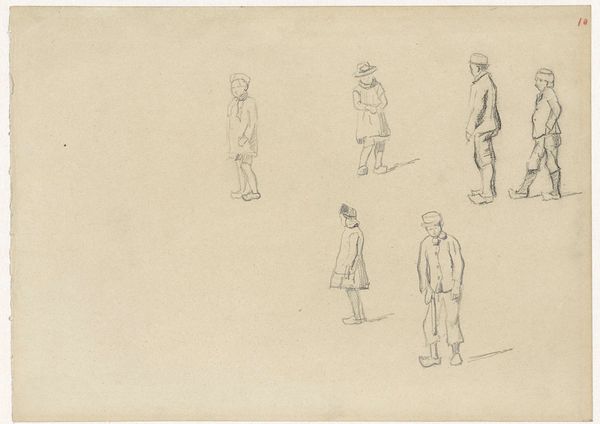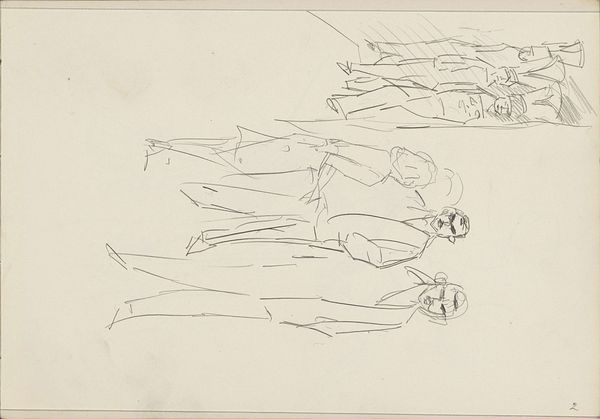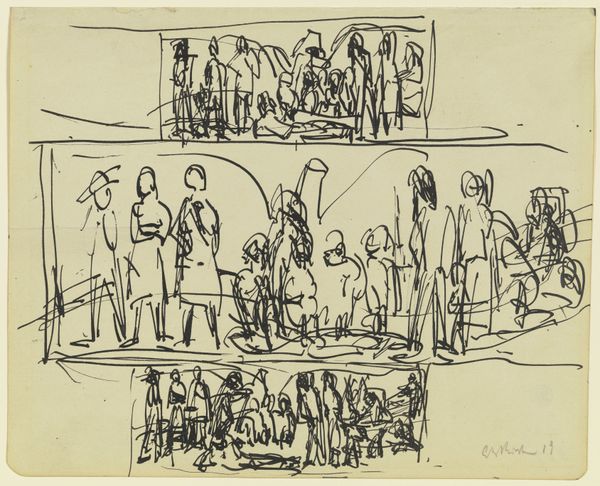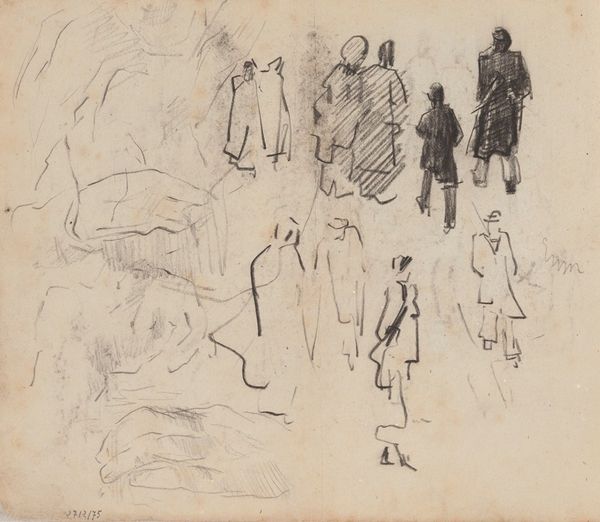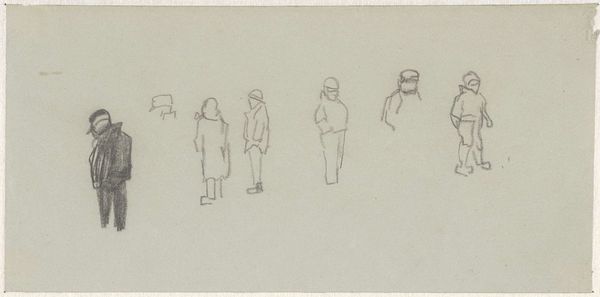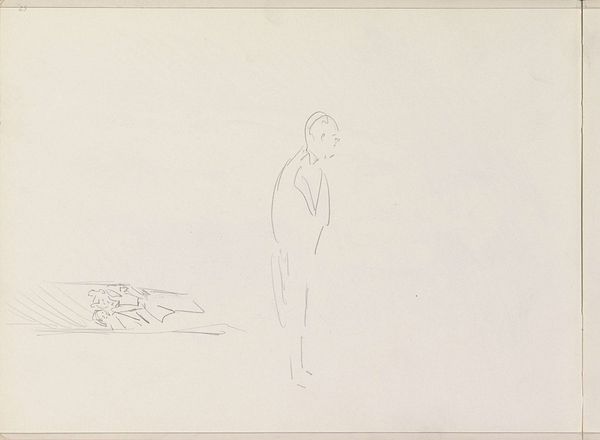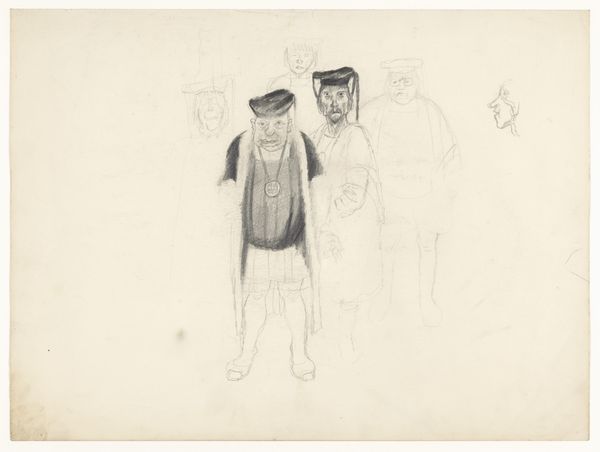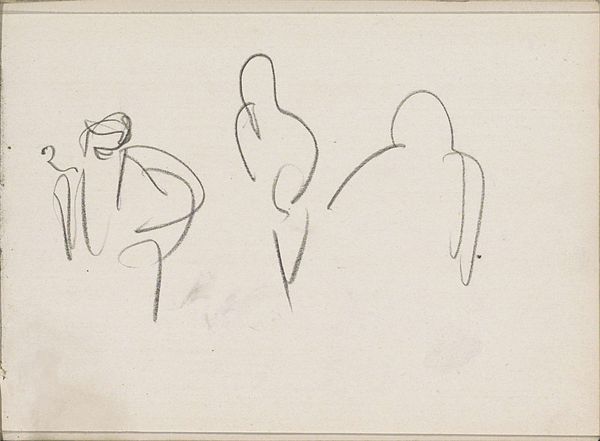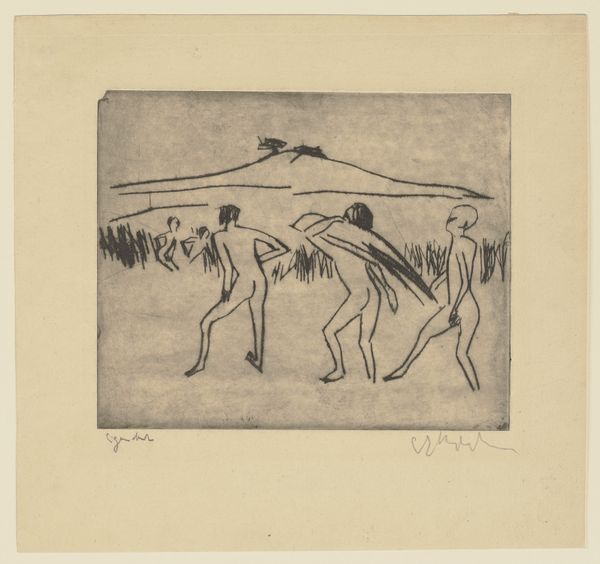
drawing, paper, ink
#
portrait
#
drawing
#
imaginative character sketch
#
light pencil work
#
quirky sketch
#
figuration
#
paper
#
personal sketchbook
#
ink
#
idea generation sketch
#
ink drawing experimentation
#
sketchbook drawing
#
storyboard and sketchbook work
#
fashion sketch
#
sketchbook art
#
modernism
Dimensions: height 163 mm, width 212 mm
Copyright: Rijks Museum: Open Domain
Curator: Welcome. We’re looking at “Six Walking Women and a Mother with Child” by Leo Gestel, likely created sometime between 1891 and 1941. It's currently held at the Rijksmuseum. What’s your first impression? Editor: Stark. Economical, really. I'm immediately drawn to the lines. Look at how much he conveys with so little. Almost like minimalist fashion sketches, or a preliminary design for a larger work. Curator: Absolutely, the suggestive nature of the lines contributes to the feeling of transience and movement, evoking a strong sense of feminine collective identity and urban modernity of the era. Gestel likely observed these women navigating societal constraints. Editor: You know, examining the paper itself, its likely readily available and relatively cheap, suggesting this wasn't necessarily intended as a finished “masterpiece” but perhaps more like a preparatory sketch—a fleeting glimpse recorded for further artistic exploitation, or not. Curator: Precisely. His technique, relying on simple ink drawings on paper, strips down representation to its core. He is showing not just figures, but figures moving through—and being molded by—a particular social reality, defined by specific gender expectations and experiences. The sketch offers insight into how modern women were navigating public space and visibility. Editor: I agree. But let's think materially. Ink and paper allowed for rapid production and dissemination of images. The drawing hints to industrial possibilities of the time—mass produced art for growing consumerist appetites. Curator: An interesting counterpoint! Perhaps both? A personal exploration also reflecting mass culture. These women, possibly heading to work, or leisure activities, reflect changing gender dynamics and social expectations during early modernity. Their journey, literally depicted on the page, mirrors broader struggles for emancipation and recognition. Editor: Gestel’s work gives insights into an exciting new industrial paradigm, its creative spirit, but it’s worth remembering that artistic expression and experiment often depended on available materials. Curator: Agreed. This drawing highlights a profound connection: personal expression enmeshed with the machinery of its time. It encourages critical thinking about visibility and the place of women in the world—then, and perhaps now. Editor: Seeing Gestel's economical drawing lets us re-think the relationships between labor and artistic representation. Curator: Indeed, a layered, dynamic picture emerges as we look deeper. Thank you.
Comments
No comments
Be the first to comment and join the conversation on the ultimate creative platform.
